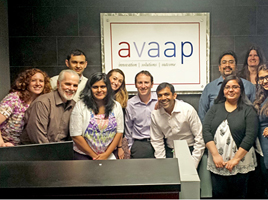At the beginning of 2022 industry commentators seemed pretty united on one thing. That this would be the year of the vertical industry solution.
John Reed of Diginomica has been arguing for some time that the future of ERP is vertical and has quoted many in his support. For example, Acumatica whose industry editions he reckons make up 78% of their SKU mix – that’s up from 20% four years ago. He also quotes Unit 4s Mike Etting who said,
“The industry requirements of mid-market companies force cloud ERP companies to push into industry functionality as a must-have (Larger enterprises are more likely to build their own industry tools).”
Interestingly, here at Sapphire Systems, we prefer to start by looking at the specific customer standing in front of us. As Sapphire Chief Strategist Chris Gabriel says;
“I think the big question for us is – what does the customer need to do? How can the partner help and what does the vendor have to offer? SAP is doing a lot more industry-specific solutions straight from the cloud – so customers can adopt best practice in horizontal functions like finance – but then grab industry-specific stuff also.”

Indeed SAP says,
“Business innovation starts with ideas: how to fix a problem or how to discover and unlock new value. Translating an idea into a business process, and then into a solution to support this process, requires an innovation space that comes with all the tools and content necessary to build and deliver fast and predictably – and that is SAP’s industry cloud..”
Industry cloud is their strategy to extend the intelligent suite with innovative solutions built by SAP and partners on the SAP® Cloud Platform. The result is an open business and technology platform for customers’ core business in their respective industries.
Over at Infor, they are, in their own words, taking ‘industry specificity for ERP to a whole new level’. Infor’s unique selling point in the ERP market has always been its commitment to industry verticals.
Now they want to deliver quicker time to value by using out-of-the-box functionality for specific micro verticals while simultaneously driving customers to the cloud and implementing a user-focused approach to design.
Soma Somasundaram, Chief Technology Officer and President of Products at Infor told Diginomica that ERP vendors typically announce an ‘industry edition’ of a horizontal ERP – a kind of standardized ERP with some configuration for the industry which is very different to an industry-specific ERP.
He says,
“The problem with that is that you really cannot go and deliver the last mile functionality. So our approach is that we have a solution that addresses service industries, particularly the healthcare and the public sector. That is a different solution to what we go to market with for aerospace and defense and discrete manufacturing in general; which is different from process manufacturing, like food and beverage, chemicals and distribution.”
You can get as granular as you want, for example by designing a solution for USA dairy farmers focussing on a very specific procure-to-pay process or a flavour of SAP Business ByDesign aimed at the hotel industry which integrates the USALI accounting standard. The alternative is using a horizontal platform and then spending a lot of time on consultants making it work. You can save a lot of time of you come out of the gates with your industry needs predefined.
Infor have just launched their Marketplace, a “curated showcase of solutions that can augment and enhance customers’ existing Infor investments”. The marketplace is aiming to make it easier for customers to “discover, source and licence industry and micro-vertical solutions” that easily integrate with Infor.
The primary purpose of the marketplace is to make it easier for Infor’s partner ecosystem to build out those micro-vertical solutions and make it easier for customers to purchase add-ons.
Same at SAP where there is a huge range of intelligent options on offer via the SAP store – many of them developed using the expertise of partners. These aren’t only available to S/4 users – ByDesign and Business 1 customers can use them as well.
Sapphire’s head of Business 1 Simon Merrick says;
“One thing is true and constant, and it’s changed. What is standard for an industry today is obsolete tomorrow. What is custom today becomes the standard of tomorrow. It is this constant cycle of invention, standardisation of, and re-invention that keeps the platform at the forefront of industry needs.
Look at the simple screw invented and standardised in 1841 by Joseph Whitworth which played a central part in building railways across the world. Without it, the railway and arguably industry growth itself would have been curtailed. Now look at the array of screws available – Joseph would be dizzy!
Every organisation strives to be different. To do things better, more efficiently than their competitor, to challenge the standard.
Take the humble invoice, for example, standard in nearly all companies and countries. It used to be paper, with a carbon copy behind to create duplicate and triplicate. Today, all the ERP vendors have standard electronic and digital invoice solutions, with add-ons available like OCR, artificial intelligence, automation, credit monitoring, forecasting, regional tax processing, partial payment management, banking integration, and powerful analytics. That single and simple process now has an array of options, complexity, and benefits to consider. All of which can be the source of distinct competitive advantage, better financial performance, and happier customers. “
SAP offers business leaders an extensive selection of industry cloud solutions to extend support for end-to-end processes with the intelligent suite and business networks. Open API’s make it even easier as many CIOs struggle with the effort to integrate vertical solutions from many different vendors.
Lee Sands Asset Management Solutions Advisor at Sapphire is keen to point out that a best of breed approach can offer serious advantages;
“As we’ve seen with many customers, users don’t need to settle for average solutions that are add-ons to other backend systems. With the modern architecture of cloud solutions, integration between best-of-breed systems is no longer a time-consuming blocker that adds significant risk. Instead, a company can embrace an SAP platform for ERP, a HxGN EAM solution for Asset Management, and a different CRM, ITSM, and HR system too; each one delivering the value to the area it is designed to do so.”
Sapphire’s Chris Gabriel says, “this is the new world we are embracing. Of course in the perpetual world customisation still remains but we are excited that the cloud brings the advantage of vertical industry and horizontal transformation at speed.”
All that’s required now is a fantastic team to bring it all together. As Simon Merrick says, “A great partner is going to guide you with expertise and the ability to deliver at speed. Sapphire is well placed to do this with its global reach, ERP, and industry expertise that’s been built over more than 25 years.”
About Sapphire Systems
Sapphire is the largest digital operating transformation provider to mid-market and mid-enterprise clients. Our mission is to turn operating friction into digital business momentum. We are globally significant partners for SAP, ServiceNow, Automation Anywhere, Infor, Hexagon, and AWS with over 1,250 clients in the UK and US. Our portfolio includes consulting, design, delivery, lifecycle service, and cloud services.







